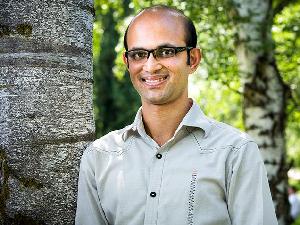Article featuring the project.
Australian National University PhD student wins ecosystem grant for international research,
This study is designed to estimate the value of major ecosystem services (ESS) of conservation forest in Cambodia and explore the effects of ESS on community wellbeing and forest conservation.

Ecosystem services (wood) collected from the forest for cooking.
Veun Sai-Siem Pang Conservation Area is part of Indo-Burma biodiversity hotspot and home to many endangered primate and bird species, and thereby, source of many ecosystem services (ESS). These ESS have been neither identified nor evaluated previously.

Abu Kibria.
This study aims to:
1) estimate the value of major ESS of the forest;
2) explore the effects of ESS on community well-being and forest conservation by studying community based ecotourism.
The value of ecosystem services (ESS) will be measured by using well recognized formula of each ESS. Data to estimate the value of regulating, supporting services will be collected from the Cambodian Forestry Administration and NGOs. Conservation international has implemented Community Based Ecotourism in VSSPCA involving people from five surrounding villages. Approximately 60 national and international tourists (taking 30 from each category) tourists will be randomly selected for the interview to determine the willingness to pay by the tourists.
While studying the effects of ESS on human well-being our special focus would be on how recreational and aesthetic services change the community well-being. There are five villages around Veun Sai-Siem Pang Conservation Area (VSSPCA). From each village 10-15 households will be randomly selected for the study and thus, in total 50-75 household heads will be interviewed by using semi-structured questionnaire. Data regarding provisioning services evaluation, the effects of ESS on human well-being and biodiversity conservation will be obtained from these interviews. Group discussions and key informant interview will be performed to supplement data collected from participant interview.
The domains and indicators of human well-being model are not static (Smith et al., 2013). Since participants of our study are rural poor people, we will consider the indicators that influence of the well-being of the poor part of the rural society. By generalizing the indicators, this research represents the well-being as: a) material well-being b) bodily well-being; c) freedom of choice and action; d) security (Narayan et al., 2000; Smith et al., 2013). For measuring the effects of ecotourism in ecosystem conservation and changes of three major issues for nature conservation including hunting, logging and awareness participants will also be asked to identify the most important cause of for the change in logging, hunting and awareness.
Research on ESS and their effects in Cambodia is very much limited. This study would fill up the gaps of our understanding regarding ESS and their roles in human well-being and biodiversity conservation.
Article featuring the project.
Australian National University PhD student wins ecosystem grant for international research,